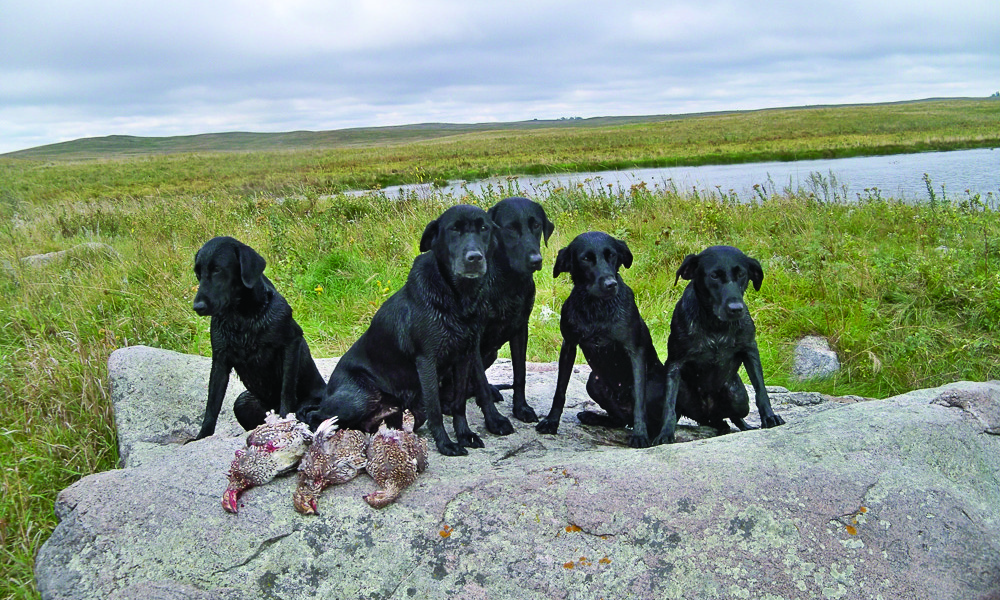Written by Carl Altenbernd originally appeared in Gun Dog Magazine
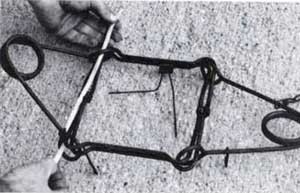
Releasing a dog from a conibear trap is a bit more complicated than opening a simple foot-hold trap or snare, but it is not difficult. Most people have strength enough to simply squeeze the spring (first the left, then the right) arms togheter and place each setting hook into the lock position. If strength is not enough, a four-foot piece of rope works.
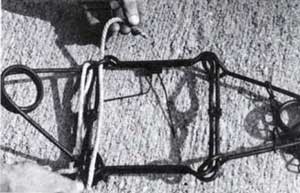
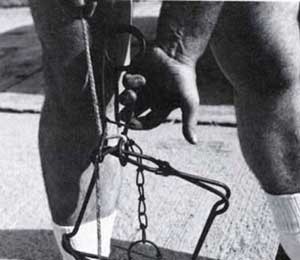

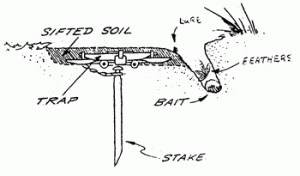
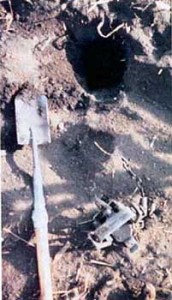
You will not be able to see the dirt-hole set, but your gun dog will smell the trap location and develop an interest in it.

Land trapping is one of the most misunderstood sports practiced in the field today. It has been an easy target for the animal-rights groups, thanks to myths and misunderstandings. As a dog owner, you should be aware of the basics of trapping. The snare, conibear, and leghold traps are not dangerous nor a threat to you or your dog. A controlled sport that ensures no endangered species are caught, trapping is an essential and necessary tool for the proper management of furbearers and predators.
Let’s look first at a few of the facts about trapping. Gun dogs can easily be released from a leghold trap without harm. Trappers have no intention of catching non-target animals and few non-furbearers are caught due to set construction, selective attractors and regulations addressing methods to avoid non-target catches. Furbearers are held in the trap only a few hours. Most furbearers make an effort to escape until they are convinced they are securely held in place. When approaching a trapped furbearer, you should walk around the animal. In no instance should you shoot a trapped furbearer. In fact, in most states you are in violation of small game regulations if you disturb a trapper’s set.

There are two other forms of traps, the snare and the body-gripping trap, which is commonly called the conibear. The snare completely encircles the neck or limb of a target animal. The conibear, as illustrated, has one or two springs that close by the tripping of a trigger as the animal passes through the center of the trap. The conibear is used for some species in water trapping. Most predators are too shy and avoid the trap design. The use of snares and conibears are subject to separate specific regulations in each state’s small game trapping laws. Most states allow the use of snares or conibears on farmland and in urban areas only as a water set. A water set is usually described as any body-gripping trap or snare set so that the trap jaws or snare loop are at least half-submerged in water. Further restrictions on the snare include the diameter of the snare loop not exceeding 10 to 12 inches or being set more than 12 to 16 inches above the ground.
When hunting in the upper Midwest, you have the greatest chance of running into a trapper’s set during mid-October to mid-December, when pelts are at their prime. The season can be longer or shorter. An early heavy snowstorm will shut down most trappers because the leghold trap does not function well under adverse field conditions.
Most furbearers in the field are caught in leghold traps by using what is commonly described as a dirt-hole set. The trapper will usually use a No. 1-1/2 or No. 2 coil spring. Attached to the trap will be a metal tag that includes the name and address of the trapper. In addition, an eighteen- to twenty-four-inch metal stake secures the trap. Special components to the set include a trap cover, feather attractors, lure, and bait. The set is designed to simulate a location where a furbearer has buried a food-catch for later eating. As a hunter in the field, you will not see the dirt-hole set unless you are an experienced trapper, but your gun dog will pick up the scent.
If your gun dog has been caught, what do you do?
Your dog can be easily released from the leghold trap without harm by simply compressing the trap spring levers on each side of the closed jaws. Your first objective should be to calm the dog. If the dog is overreacting, remove your hunting jacket and place it over the dog. This should allow you to calm the dog down so you can remove the trap. The leghold trap should not cause any permanent injuries. In fact, studies have shown that foot damage to fragile-boned red and gray foxes is less than one percent after the animal has been held during legal trapping hours.
To remove a gun dog from a snare is as simple as the removal from a leghold trap. Again, if the dog is fighting the set, be sure to calm him first. As the photo illustrates, to remove the snare just pinch the clasp that closes it. This will allow you to slide the snare open. It’s that simple.
The chances of your gun dog running into a conibear are slim due to the fact that the trap is usually retricted to a water set. With a small piece of rope or your dog’s lead, you can release a dog quickly from a conibear (see photos).
Trappers have not been working the fields like they did in the Seventies and early Eighties. However, trappers continue to play a vital role in the furbearer harvest. Wildlife experts agree that leghold traps are an essential tool in the proper management of furbearers. With the high reproduction rates of furbearers, the need for a controlled harvest will continue and the leghold trap will remain an important trapping tool.
You can avoid having your gun dog trapped by simply asking the landowner if a trapper is working the fields you are going to hunt. If you are approaching a trapped furbearer, avoid disturbing the set. And remember that gun dogs can be released easily from a trap.
